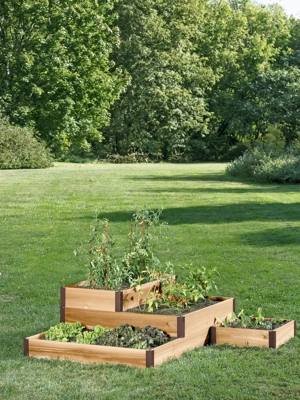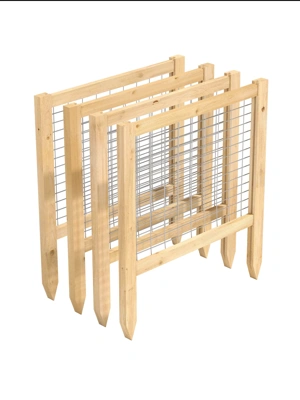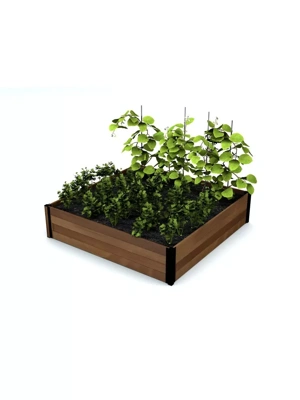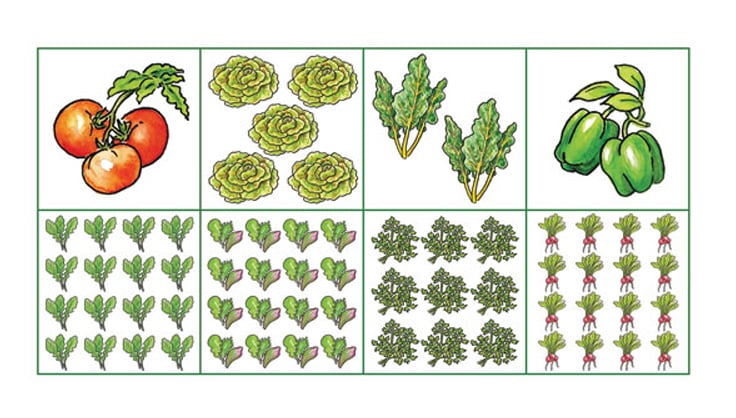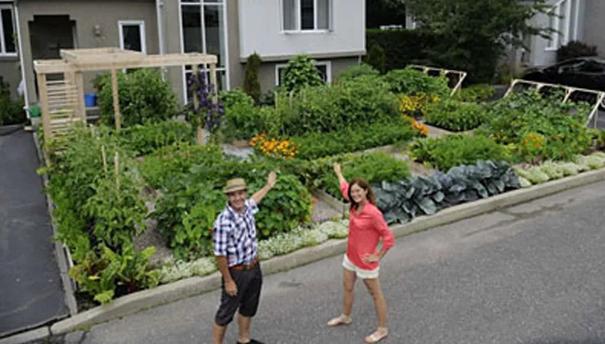Don't Hide Your Veggies
Create a Vegetable Garden That Showcases Plants and Invites Exploration
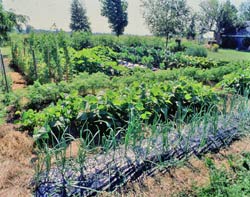 Making your vegetable garden into a place where you want to linger, means you need to think about design. Like a painter with a canvas, your job becomes one of attracting the eye and keeping it engaged in the scene.
Making your vegetable garden into a place where you want to linger, means you need to think about design. Like a painter with a canvas, your job becomes one of attracting the eye and keeping it engaged in the scene.
When people visit my garden, they usually spend most of their time in the flower gardens. But I always find it surprising how many people enjoy, and really take time to investigate, the vegetable garden. Here at our display gardens in Burlington, Vt., the vegetable gardens are always a favorite destination.
Traditionally, American vegetable gardens are really not that interesting. The plants are banished to a plot in the backyard, and treated like school children—placed in orderly rows and attended to only when unruly—with end-of-season yields being the measure of success.
But when vegetables are planted in a garden designed to accentuate their beauty, as they are in my own garden and the one here at Gardener's Supply, people can't help but wander in for a closer look. Once revealed, the beauty of these plants never fails to astonish: the feathery fronds of asparagus, the glistening leaves of ruby chard, the pristine white heads of cauliflower, the fanciful flower stalks of garlic. And joy of joys, we can eat them all!
If you'd like to try turning your own vegetable garden into a place of both beauty and productivity, here are a couple suggestions. Fortunately, they'll also help you save water, save time, and confound pests.
Banish the Straight and Narrow
Making your vegetable garden into a place where you—and others—want to linger, means you need to think about design. Like a painter with a canvas, your job becomes one of attracting the eye and keeping it engaged in the scene.
Imagine if the path system in your current vegetable garden were gone. How could you divide up the space in an entirely new way? You might create a focal point in the center and have all paths lead to that spot; establish circular or triangular beds; integrate a bench or bean-covered arbor. Your objective is to create a variety of different destinations within the garden. When you can't tell at a glance what's growing where, you get the urge to roam around and check things out.
Practically speaking, mixing things up in the garden is also a good way to confuse pests. It's easy for whiteflies and aphids to hone in on a 10-foot row of pepper plants. But when your peppers are planted here and there, nestled among lettuces, basil and tomatoes, they're much more difficult for pests to locate. Mixing up your plantings also provides the opportunity for lots of different growing conditions. When all your plants are in identical rows with the same exposure to sun and wind and water, you can't create the microclimates that best suit particular plants: full sun exposure for tomatoes and onions, sheltered nooks for lettuce and spinach.
Frame It in Style
In France, artfully designed kitchen gardens are called potagers. One of the distinguishing features about these gardens is that the growing space is usually framed by structural elements. The plants are then placed inside these frames. Framing elements might include: wooden sides enclosing the raised beds, clipped hedges that encircle a bed or line a pathway, a decorative fence and gate surrounding the garden, trellises and other structures for vertical support. All these elements serve a function, but in a poteger, they are integrated into a cohesive design style. Permanent pathways are another useful framing device in the poteger. They are used to clearly define walking areas, and send the message: "Come in and have a look around."
On a practical note, using these framing devices to define planting areas can make maintaining your garden much easier. Permanent beds don't need to be tilled every spring—since you never step in them, you can just loosen the soil with a fork and rake it smooth before planting. Intensively planted beds and permanent walking paths also make it much easier to water and stay on top of the weeds.
Put Your Plants in the Spotlight
With an interesting garden layout and well-defined beds and pathways, your vegetables can become the stars of the garden. A raised bed that's a patchwork of different lettuces becomes a thing of beauty. Or imagine the colorful interplay of yellow tomatoes, purple basil, red peppers and dill. How about yellow patty pan squash clambering up a cobalt blue trellis, or a bed of yellow-stemmed Swiss chard and blue-green Italian kale.
I'll admit there are a number of vegetables in my garden that I plant every year and rarely ever eat. I grow them simply because I love the way they look. On that list would be red cabbage, purple basil, leeks, celery, artichokes and fennel. I'm not recommending that you plant vegetables and not eat them. But I do want to encourage you think about vegetables as food for the eye as well as food for the body.
There are also a number of good books about kitchen gardens, many with photographs to inspire you. Here are a few to consider:
- The Art of the Kitchen Garden, by Jan Gertley and Michael Gertley
- Kitchen Gardens, by Cathy Wilkinson Barash
- The Kitchen Garden, by Richard Bird
- Edible French Garden, by Rosalind Creasy
Last updated: 12/20/2022
Print this Article:
Related items
Related Articles
Get the Dirt
Stay up to date on new articles and advice. Please fill out the information below.



